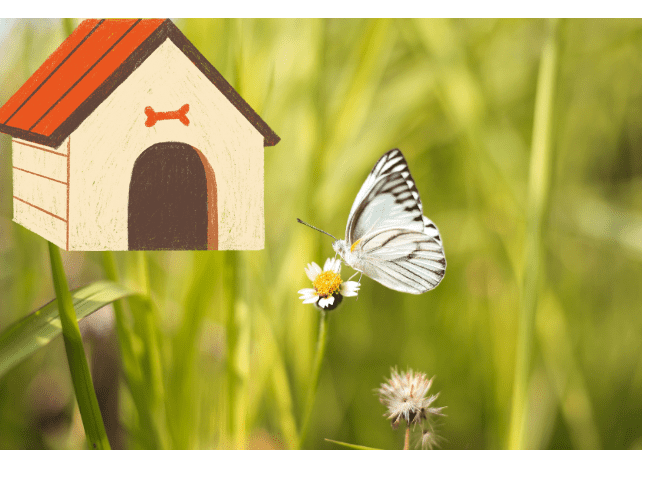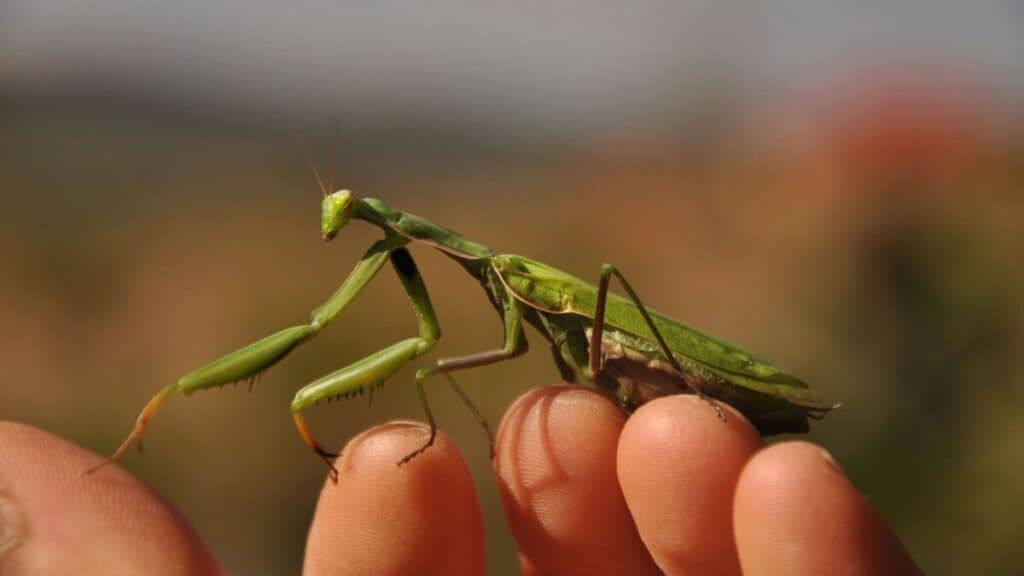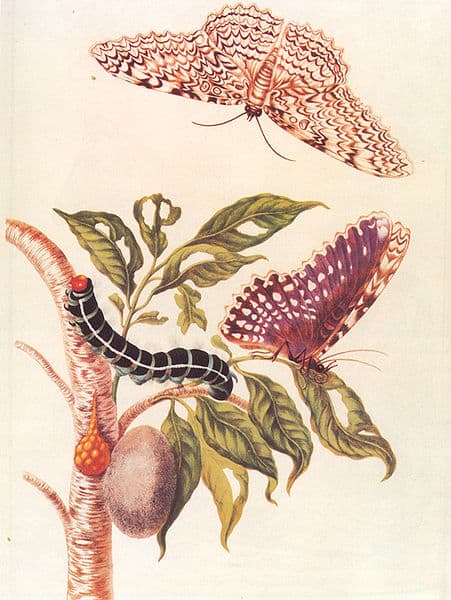
Keeping insects as pets can be incredibly fun! While most bugs aren’t exactly cuddly, keeping them as pets lets us learn so much and get closer to the insect world. So why not give it a try?
However, not all insects are the same. They all have different needs which you have to be aware of if you want to keep them alive and happy in captivity.
In fact, I would say, all insects are more difficult to keep than a cat or a dog, at least in a way. That’s because a cat or a dog can, and will, get your attention if it’s necessary. Typical pets can show us they are hungry or when there is something wrong. Bugs usually can’t – at least until we learn what signs to look for.
For this reason, we really need to be careful and put in some effort to understand their needs.
By going through this guide, you’ll be able to gain a better understanding of what the perfect pet bug for you might be, all things considered.
Things to Consider Before Choosing an Insect Pet
Have your mind set on a specific insect? Or have no idea where to start? Either way, going through this list will help you decide who is your perfect insect companion.
Size and Space Requirements
Before you even consider getting a pet bug, ask yourself this question: how much space do I have for a new pet?
Insect pets typically do not require a whole lot of space, but they might actually require more space than you expect. Therefore, it’s highly advisable to think things through before you start.
Many bugs, like some species of spiders and mealworms, for example, don’t require a whole lot of space at all. All they need is a small-ish plastic container or a jar.
Other insects need quite a bit of space to feel comfy, and might need a 10-gallon tank for a single individual (like in the case of scorpions, for example).
Finally, if you want to keep an insect that also needs to fly, like a butterfly, for example, well… you’ll need quite a bit of space for that.
One more thing to consider here is whether you want one pet bug or multiple ones. For example, most mantis species don’t do well with other mantises in their enclosure. Therefore each mantis will need its own room! That can quickly add up and require lots of space.
On the other side of the spectrum, ant farms can be quite small and they can host a whole colony of ants.
It’s all up to you, just make sure to research the needs of your new pet before you start!
Diet
Will your new pet bug be a vegetarian or a meat-eater? In the insect world, this is not a question of personal preference. While some bugs are omnivores (meaning they can eat lots of different things), many of them have a very limited diet.
And when you keep a bug in captivity, you will have to come up with enough of the required food to keep your pet alive. When all your bug pet needs is some type of veggie, that’s pretty easy, but you have to keep in mind that some bugs need to be fed live insects instead!
Herbivores
Herbivores are your easiest option in this regard. This type of insect only eats plants, and all you need to do is provide enough of their favorite leaves or veggies.
These are some of the most popular plant-eating pet bugs:
- Field crickets – will eat lettuce, various fruits, and even moist bread
- Stick insects – will eat all kinds of leaves depending on the species, although eucalyptus leaves are a favorite
- Caterpillars – caterpillars make wonderful seasonal pets, but they can be tricky in terms of food because they often feed on the leaves of only one specific plant. If you capture a caterpillar found in the wild, it’s important to make note of the plant on which it was feeding and continue to feed leaves of the same plant.
Omnivores
Omnivores, in the insect world, are typically just as easy to feed as herbivores. In fact, they might be even easier. That’s because omnivores don’t usually need live insects. Instead, they are mostly happy with pretty much everything you give them.
Here are some examples.
- Mealworms – can basically live off oats; but also like fruits and veggies – and will probably eat most other foods
- Millipedes – most of the time, they like to eat decaying wood and plant mater, but millipedes can eat any kind of plant material
- Cockroaches – Roaches are the true omnivores – they can feed on almost anything, from decaying plant matter to most table scraps to meat to dead insects. And they make quite wonderful pets too. Check out the Madagascar Hissing Cocroach, for example.
Carnivores
Carnivores are the most demanding group in the insect pet world. These species are typically predators meaning that they want to catch their prey and eat it alive. But what when there is on prey, since they are in captivity? Nope, there is no replacement you can buy in the supermarket.
You’ll actually have to feed them real live insects. Although you can actually often buy those in pet stores, it’s always a great idea to catch some smaller insects yourself to feed your beloved pet. If this sounds like fun to you, definitely go try growing an omnivore!
These are some examples:
- Praying Mantis – Most mantis will eat anything that walks and is smaller than them. This includes all kinds of insects (yes, even members of the same species occasionally) as well as small rodents and other animals.
- Tarantulas – Tarantulas will happily munch on most smaller insects like grasshoppers, crickets, beetles, other small spiders – and even small lizards if they are available.
- Scorpions – Scorpions are as bloodthirsty as the two bugs mentioned above. Although they are most commonly fed crickets, scorpions will enjoy feasting on any creature they can get their ‘hands’ on.
Care Requirements
Some insects are easier to care for than others. For example, beetles are generally low maintenance, while praying mantises require more attention and a specific diet.
The thing to consider is how much time and attention are you willing to invest into caring for your new pet.
For a start, some insects will need to be fed every day, while others only need food about once a week. Some bugs require you to clean their enclosure almost every day, while others take care of everything themselves.
But it’s not just about the time you invest into this, some bugs will also need special equipment. The more exotic the species you have, the more likely it is you will need to purchase some special items like enclosure heaters or humidity monitors.
Life Span
Mayflies are the insects with the shortest lifespan. Their lives last less than a day. This obviously makes pretty bad pets. Longest-living insects include termite queens which can live up to 50 years. And then there is everything in between.
Many popular insect pets will live only a year or even less – like stick insects, leaf insects, and many species of praying mantis.
On the other hand, a Madagascar hissing cockroach that is well cared for can live a couple of years.
A stag beetle can beetle can be your friend for up to 7 years:
For more on the topic, check out:
15 Long Lived Insects That Make Great Pets
Cost
Keeping a pet insect doesn’t have to cost a thing. If you choose native species that live around your home, you won’t need to spend much money.
You can simply catch the bug in the wild, build a simple enclosure, and provide the food it likes to eat, which, presumably, can also be found in your surroundings. Moreover, choosing a native species means you won’t have to create special conditions for your pet in terms of temperature and humidity.
On the other hand, if you want to keep some fancy-looking exotic species, you might want to invest much more. Just getting this type of bug and paying for shipping can get quite pricey, not to mention all the special equipment and nice food it might need.
What Insects are the Most Expensive to Keep as Pets?
What Insects are the Cheapest to Keep as Pets?
Availability & Legal Considerations
Depending on where you live, certain insect species might be very hard or easy to find. Many can be found in online shops too, but some bugs don’t do well with shipping so that’s not always an option.
In relation to that, there is also the question of legality. In some places, it is illegal to own certain types of insects as pets. Make sure to check local laws before bringing an insect home.
In New York City, for example, it’s officially forbidden to keep any kind of venomous insect as a pet. In other spaces, certain invasive or exotic species might be forbidden.
Personal Preference

Last but not least, it’s time to think about which insect you really want to keep. Ultimately, the most important factor is whether you are interested in and committed to caring for an insect as a pet. Choose a bug that you will enjoy learning about and interacting with.
It really doesn’t matter what others think of it, it’s you who will form a special bond with these little insects. Although not very pretty, mealworms are very fascinating to watch, and they are just as good pets as any.
However, they certainly are not as pretty as an Orchid mantis, for example, but this one might need a bit more care.
Would you like an insect with fascinating looks, or do you care more about learning about its behavior? Would you like to observe a solitary insect or a whole colony? These are only some of the questions you may want to think about.
Pro Tip: Consider the Different Life Stages

One thing to consider when choosing a pet bug is the fact that insects can change a lot during their lifetime. In fact, sometimes the adult individual doesn’t resemble the larva in any way.
These changes that insects go through are what we call a metamorphosis. Some insects go through incomplete metamorphosis which means they don’t change the shape and form, they only grow in size.
Insects that go through incomplete metamorphosis include praying mantis, crickets, stick insects, and cockroaches. That means that what hatches from their eggs is a tiny version of the adult.
On the other hand, some insects go through complete metamorphosis. What hatches from their eggs is a larva which looks completely different from what it will eventually become as an adult. The most common example are caterpillars and butterflies.
A caterpillar not only looks a lot different than a butterfly, but it also has completely different needs. It will need a different enclosure and different food from the butterfly that it will grow into.
Other insects that go through a complete metamorphosis include beetles, wasps, and ants.
Final Thoughts
That’s it for this article. Keeping pet bugs is great fun, and I do hope this guide will help you find your next best insect friend!
While you are here, you might want to check out some more of fun insect articles from the School of Bugs! See below:
Ten Things You Should Know About Scorpions
Ten Things You Should Know About Spiders
Can Insects Regrow Their Limbs?
Recent Posts
Tiny Black Bugs in Bathroom NO WINGS: What They Are and What to Do!
Finding tiny black bugs in your bathroom can be uncomfortable, to say the least. Especially if they are persistent, or they appear in very large numbers, which they often like to do. When it...
Tiny Black Bugs in Plant Soil - What Are They & What To Do About It
A short horror story: You get a new houseplant. You do your best to take care of it. You’ve ensured that it has the right soil, the right amount of sun, it gets enough water. And then one day, you...

